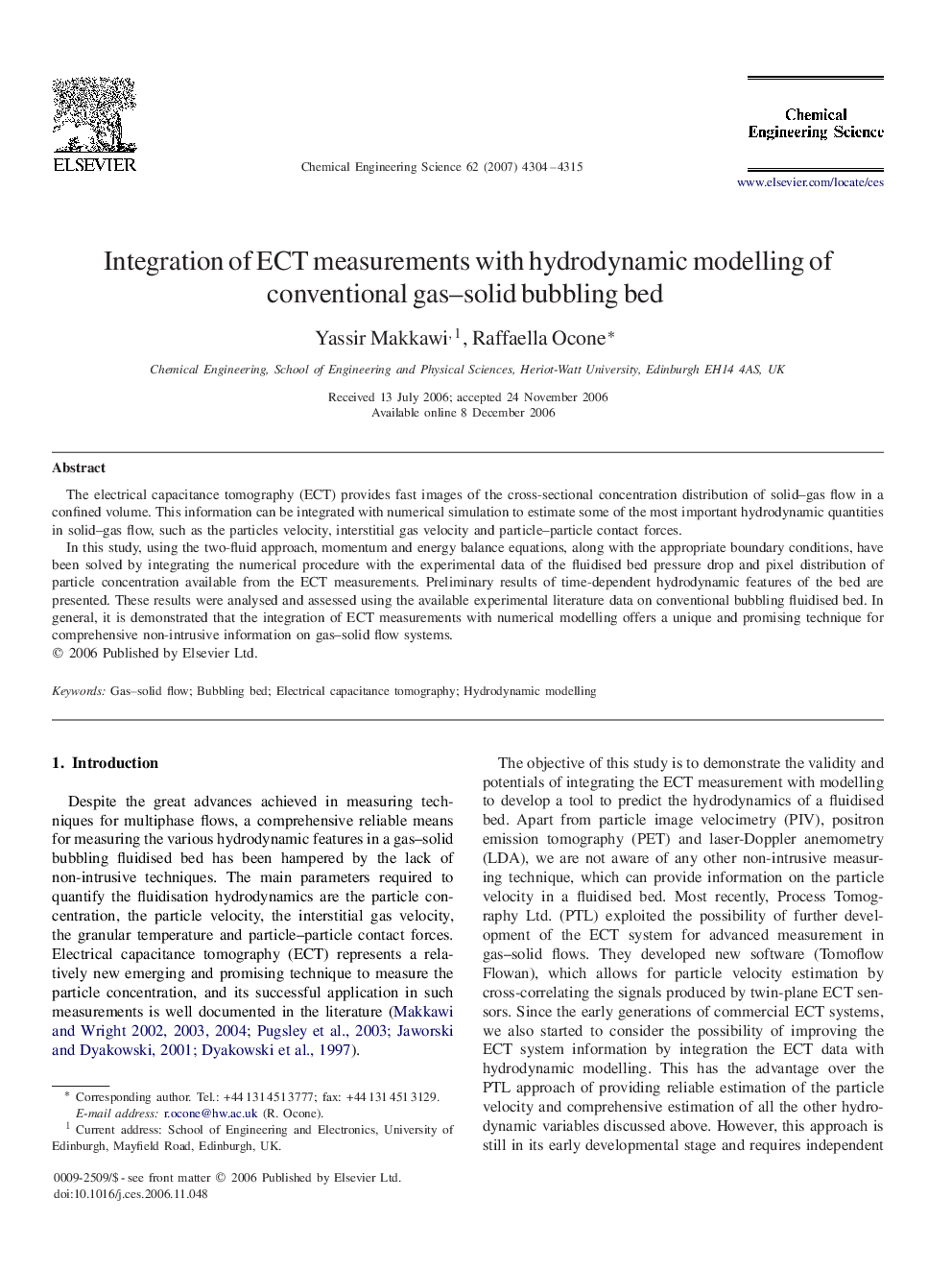| Article ID | Journal | Published Year | Pages | File Type |
|---|---|---|---|---|
| 158770 | Chemical Engineering Science | 2007 | 12 Pages |
The electrical capacitance tomography (ECT) provides fast images of the cross-sectional concentration distribution of solid–gas flow in a confined volume. This information can be integrated with numerical simulation to estimate some of the most important hydrodynamic quantities in solid–gas flow, such as the particles velocity, interstitial gas velocity and particle–particle contact forces.In this study, using the two-fluid approach, momentum and energy balance equations, along with the appropriate boundary conditions, have been solved by integrating the numerical procedure with the experimental data of the fluidised bed pressure drop and pixel distribution of particle concentration available from the ECT measurements. Preliminary results of time-dependent hydrodynamic features of the bed are presented. These results were analysed and assessed using the available experimental literature data on conventional bubbling fluidised bed. In general, it is demonstrated that the integration of ECT measurements with numerical modelling offers a unique and promising technique for comprehensive non-intrusive information on gas–solid flow systems.
